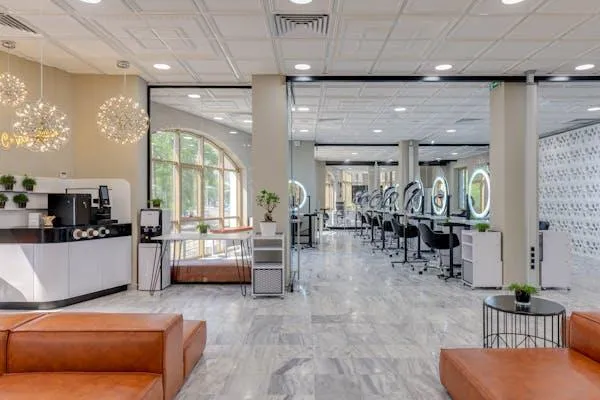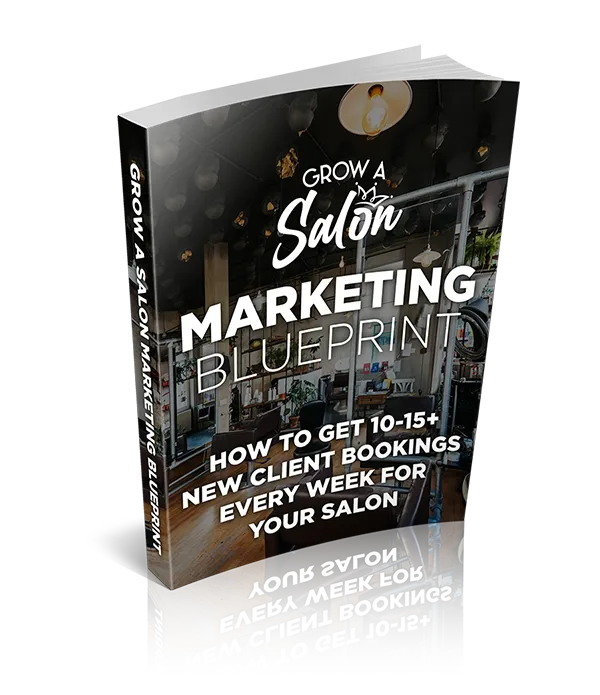
Common PPC Mistakes Salons and Spas Make and How to Avoid Them!
In the fast-paced realm of digital marketing, PPC for salons and spas offers a prime opportunity to expand their client base and bolster their business. However, success in this arena requires adept navigation to avoid common pitfalls that can drain resources and hinder progress. From precise audience targeting to mobile optimisation, implementing effective PPC strategies tailored for the beauty and wellness industry is paramount.
This guide delves into essential strategies for optimising specifically PPC campaigns for salons and spas. By addressing prevalent mistakes such as misdirected targeting and neglecting mobile optimisation, businesses can unleash the full potential of their digital advertising endeavours. From setting clear campaign goals to regularly monitoring performance metrics, each step plays a vital role in maximising the impact of PPC initiatives.
Join us as we explore actionable insights and solutions designed to empower salons and spas to thrive in the competitive landscape of online marketing. With strategic implementation and a focused approach to PPC, businesses can attract more leads, boost conversions, and achieve sustained growth online.
Failing to Target the Right Audience
One common mistake that salons and spas make in their PPC campaigns is failing to target the right audience. It's important to understand who your ideal customers are and tailor your ads accordingly. By targeting the wrong audience, you're wasting your budget on clicks that are unlikely to convert into actual customers. To avoid this mistake, take the time to research and define your target audience. Consider factors such as demographics, interests, and online behaviour. Use this information to create targeted ads that will resonate with your ideal customers.
Another important aspect of targeting the right audience is using the right keywords. Make sure to use relevant keywords in your ad copy and ensure that your ads are being shown to people who are actively searching for the services you offer. This will increase the chances of attracting qualified leads and getting more conversions.
Ignoring Negative Keywords
Another common mistake in PPC campaigns for salons and spas is ignoring negative keywords. Negative keywords are the keywords that you don't want your ads to be shown for. By neglecting negative keywords, you run the risk of your ads being displayed to irrelevant audiences, resulting in wasted clicks and budget. To avoid this mistake, regularly review your search terms report and identify any irrelevant keywords that are triggering your ads. Add these keywords as negative keywords to prevent your ads from being displayed to the wrong audience. By using negative keywords effectively, you can improve the quality and relevance of your ad impressions and increase your chances of getting more qualified leads.
Neglecting Ad Extensions
Neglecting ad extensions is another common mistake that salons and spas make in their PPC campaigns. Ad extensions are additional pieces of information that can be added to your ads, such as phone numbers, location, and links to specific pages on your website. By neglecting ad extensions, you're missing out on valuable opportunities to provide more information to potential customers and increase the visibility and effectiveness of your ads. To avoid this mistake, make sure to take full advantage of ad extensions. Experiment with different types of extensions and monitor their performance to see which ones work best for your salon or spa. By using ad extensions effectively, you can enhance your ads and attract more clicks and conversions.
Overlooking Mobile Optimisation
In today's digital world, mobile optimisation is crucial for the success of PPC campaigns. However, many salons and spas overlook this aspect and fail to optimise their ads and landing pages for mobile devices. With a significant portion of internet users accessing websites and making online purchases through their mobile devices, it's essential to ensure that your PPC campaigns are mobile-friendly. To avoid this mistake, make sure that your ads and landing pages are responsive and load quickly on mobile devices. Optimise your ad copy and images for smaller screens and provide a seamless mobile browsing experience for your potential customers. By prioritising mobile optimisation, you can improve the user experience and increase the chances of getting more conversions.
Not Monitoring Performance Regularly
One of the biggest mistakes that salons and spas make in their PPC campaigns is not monitoring performance regularly. PPC advertising is an ongoing process that requires constant monitoring and optimisation to achieve the best results. By neglecting to monitor your campaign's performance, you may miss out on valuable insights and opportunities for improvement. To avoid this mistake, set up regular monitoring and reporting of your PPC campaigns. Track key metrics such as click-through rate, conversion rate, and cost per conversion. Analyse the data and identify areas where your campaign is underperforming or where there are opportunities for optimisation. By regularly monitoring performance, you can make data-driven decisions and continuously improve the effectiveness of your PPC campaigns.
Effective Strategies for Successful Spa PPC Campaigns
To run successful PPC campaigns for salons and spas, it's important to implement effective strategies. Here are some tips to consider:
1. Define clear campaign goals and objectives: Before starting a PPC campaign, salons and spas should clearly define their goals and objectives. This could be increasing website traffic, generating leads, or promoting specific services. Having clear goals helps in designing targeted ad campaigns.
2. Optimise landing pages: It's crucial to have well-designed and optimised landing pages that align with the ad content. Landing pages should provide relevant information and a clear call to action to encourage conversions.
3. Test and optimise ad copy: Salons and spas should continuously test and optimise their ad copy to improve performance. They can experiment with different headlines, descriptions, and calls to action to find the most effective combinations.
4. Utilise remarketing: Remarketing allows salons and spas to target users who have previously visited their website or interacted with their ads. This strategy can help in increasing brand awareness and driving conversions.
5. Monitor and adjust campaigns regularly: PPC campaigns require regular monitoring and adjustments. Salons and spas should analyse their campaigns' performance, identify improvement areas, and make necessary changes to optimise their advertising efforts.
By following these strategies, salons and spas can maximise the effectiveness of their PPC campaigns and achieve better results.
In Conclusion, In the fast-paced realm of digital marketing, PPC campaigns offer salons and spas a prime opportunity to expand their client base. Success requires adept navigation to avoid pitfalls. This guide provides essential strategies for optimising PPC campaigns, addressing mistakes like misdirected targeting and neglecting mobile optimisation. By setting clear campaign goals and monitoring performance metrics, businesses can maximise the impact of their PPC initiatives. For expert guidance, consider the Grow A Salon agency, specialising in tailored services for the beauty and wellness industry. Book a session to unlock the full potential of your salon or spa's online presence and drive meaningful results.
Frequently Asked Questions
1. How can I determine the right audience to target in my salon or spa's PPC campaigns?
Understanding your ideal customers is key to effective audience targeting. Take the time to research demographics, interests, and online behaviour relevant to your salon or spa. Utilise tools like Google Analytics and social media insights to gather data. Once you have a clear picture, tailor your ads accordingly to resonate with your target audience.
2. Why is mobile optimisation important for PPC campaigns in the beauty and wellness industry?
Mobile optimisation is crucial because a significant portion of internet users access websites and make online purchases through their mobile devices. Neglecting mobile optimisation can result in a poor user experience, leading to lost conversions and wasted ad spending. Ensure that your ads and landing pages are responsive and load quickly on mobile devices to maximise your campaign's effectiveness.



